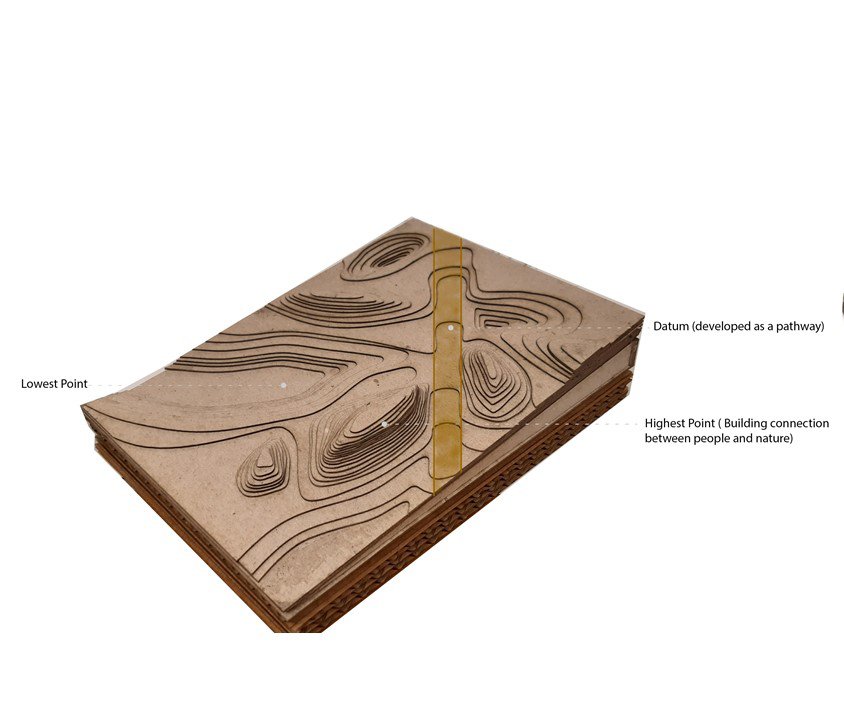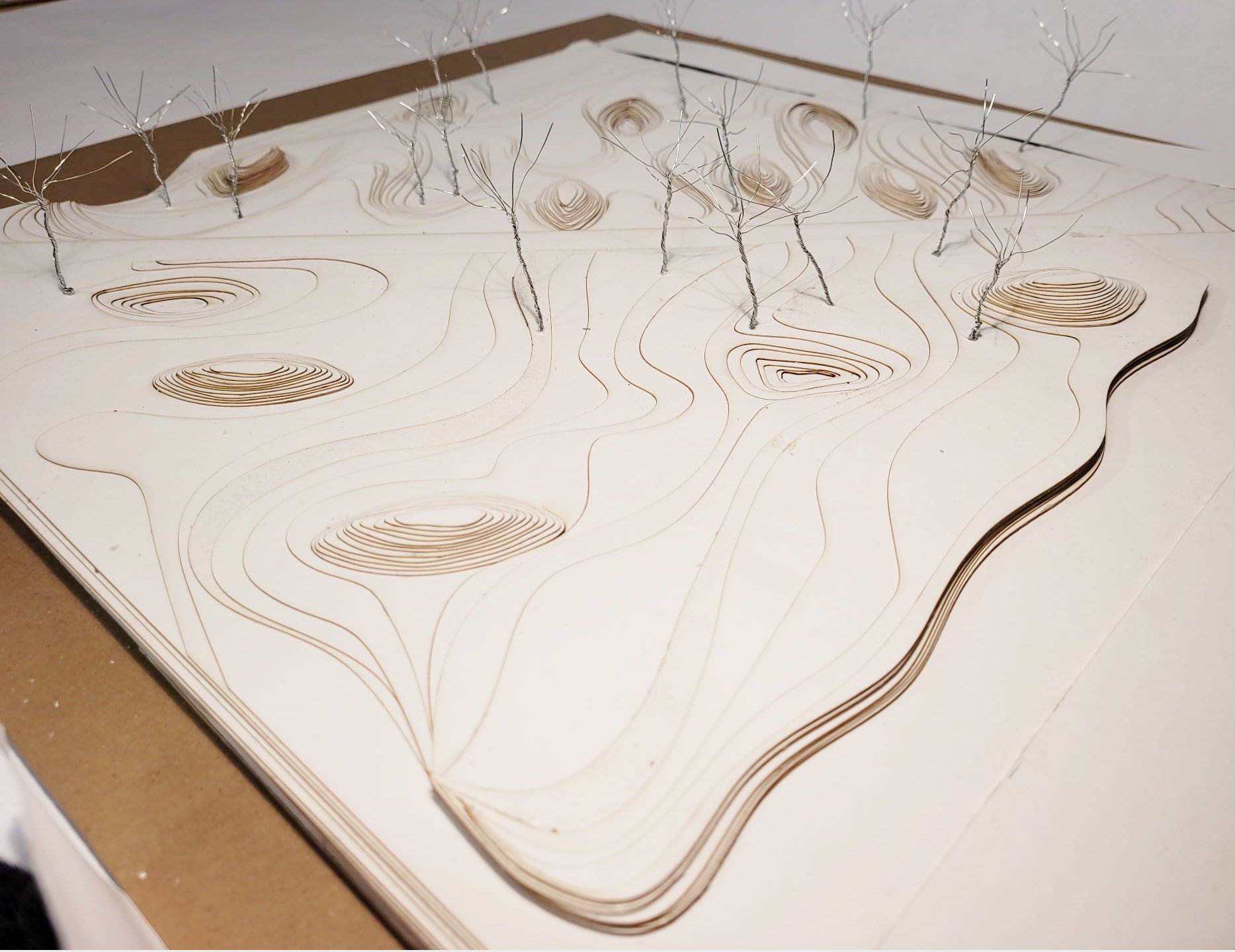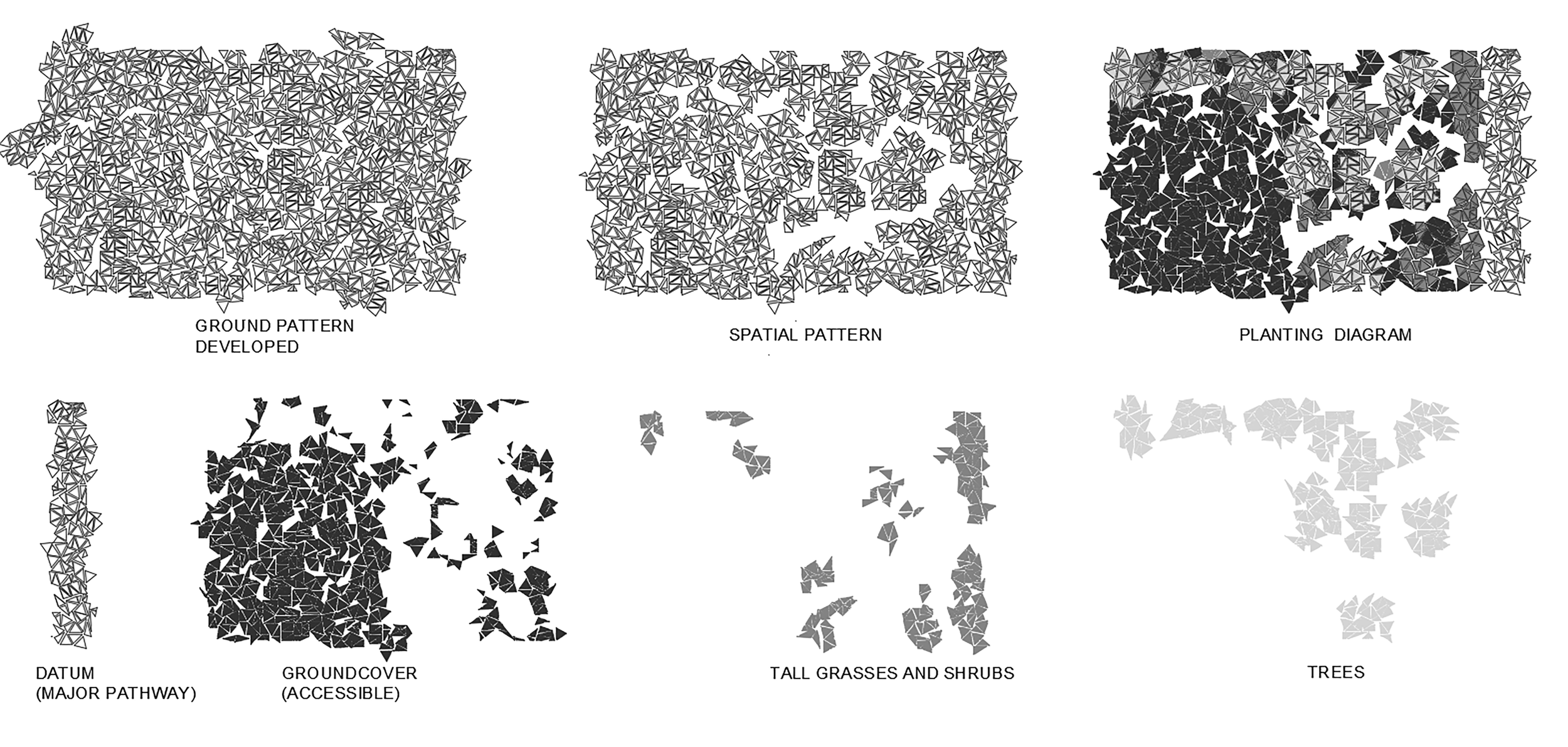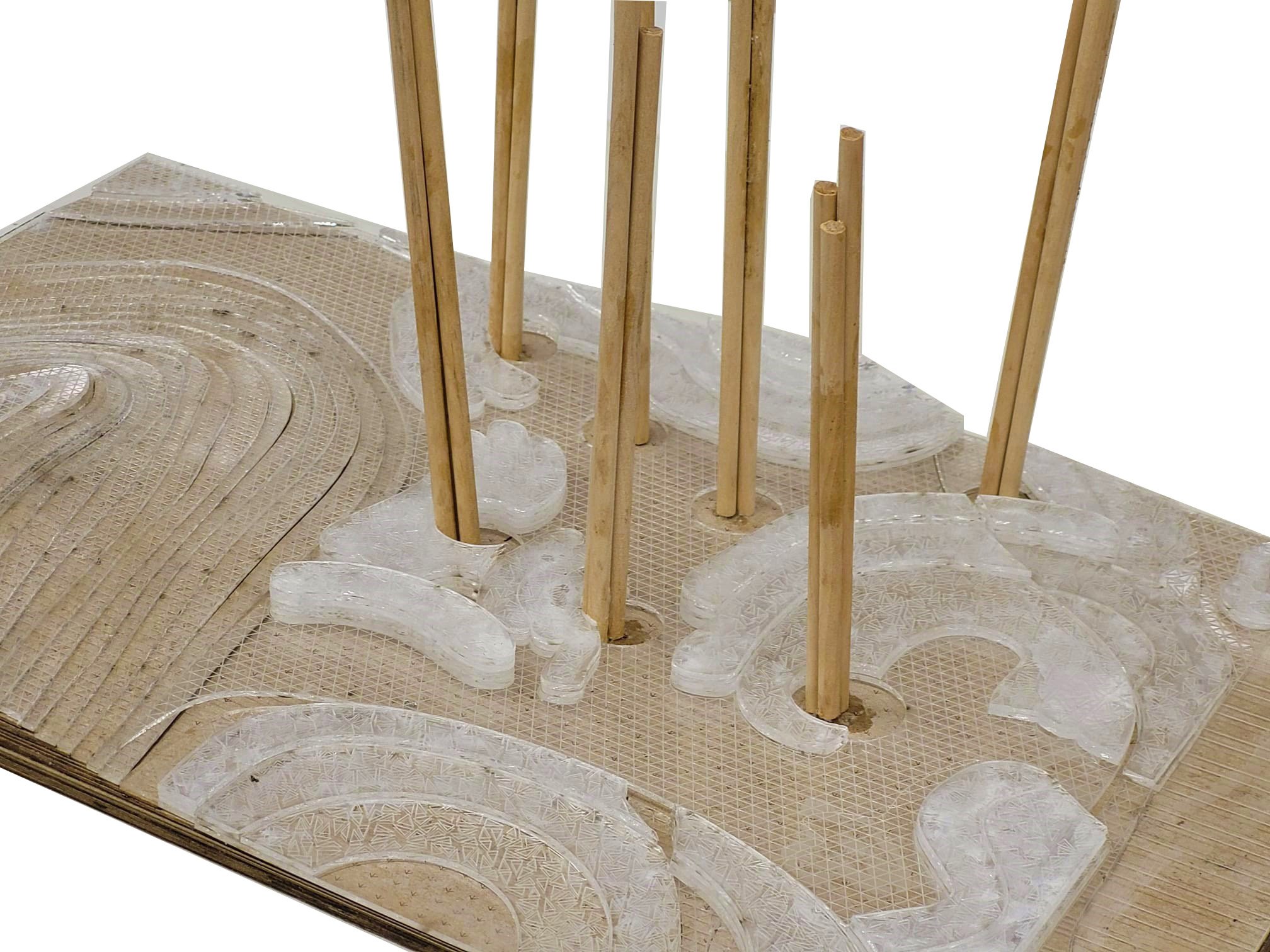Professor Cathy Marshall
This course introduces the basics of idea formation that develop through the design method and graphic communication for the discipline of landscape architecture. Emphasis is placed on the engagement of processes that initiate and advance creativity through idea formation, conceptualization and visualization. Drawing, illustrating, modeling, and forms of photography will be use to communicate ideas that create order and space in the landscape. Students explore the course material through a process of engagement, production, proposal, review and refinement. A focus on the creation of gardens will guide exploration
This Landscape Architecture Design Studio 01 Projects include: research, case studies, site analysis, design making processes, and two site design projects that focus on the creation of gardens.
Asmita Dahal
Problem 03 Visualizing Patterns + Permeability
The core idea: to create a lively public space where community members would enjoy the mesmerizing view of the Lake Erie which has been overshadowed in the existing condition. The incorporation of conceptual idea is done considering the existing site contours and topography.
A place of interaction, relaxation, and exploration. The language is occupiable mounds (high points) and depressions (low points) derived from the basic organic shapes of nature done by sculpting and altering the earth’s surface also introducing the ideas of diction and contradiction. The existing walking route is developed as a central datum; a hard surface that connects the spaces and orders the character of soft landscape surfaces. The idea of physical and visual connectivity within the spaces guides the planting patterns and decisions of wildness and domestication. The rhythmic patterns of high points and low points give a balance and provides the sensory experience to the users.










Professor Abigail Feldman
The studio will investigate the potential of urban wildlife conservation to provide beneficial habitat within the dynamic urban land matrices of the Anthropocene. Focus will be on investigations and proposals of novel habitats for migratory and resident species using an ecological design approach with contemporary and exploratory communication methods.
With this in mind, the studio aims to establish a Center of Urban Ecological Landscapes at the Metroparks Acacia Reservation. The center would facilitate international discussion and research in ecological management issues related to urban landscapes. The studio will consider the impacts of the intervention on this site as a source of design expression and ethical preservation, where design proposals become part of a sound argument for the site's ecological and urban wildlife.
Each student will design an ecological plan that outlines a landscape strategy focusing design development on key areas. The design for the landscape itself should be distinct, with defining experiential qualities. Designed intentions should be read as artifacts.
This course reinforces and builds upon the conventions of landscape architectural production introduced in previous core studios and academic courses. Emphasis is placed on precision and craft in conceptual, schematic, and design development abilities.
Brendan Alcorn
Bringing Presence to Water at Euclid Headwaters Park
The Euclid Headwaters Park is a conceptual plan for the existing Acacia Reservation, a historic country club in the process of remediation towards a rewilded park. The plan aims at improving its larger ecological connections, wildlife habitat, and public access to its watershed by collecting polluted runoff entering Euclid Creek and using biofiltration techniques to clean the water. Using sculpted forms inspired by local geology the water is exposed through all points on the site giving presence to water that celebrates all forms and processes of water. The circulation of paths is improved to allow users of the site to experience all the flows of water through shale river walks and a series of collection ponds. The site responds seasonally and to one hundred-year storm events through controlled and maintained retention basins.


